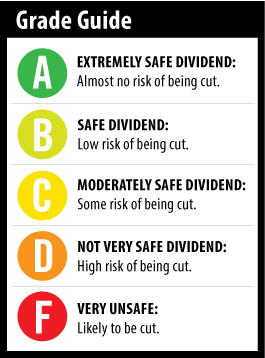 Normally, when I see an 8% yield on a stock that’s not a real estate investment trust (REIT) or a master limited partnership (MLP), my guard goes up faster than Mike Tyson’s opponents’ when he ruled the ring.
Normally, when I see an 8% yield on a stock that’s not a real estate investment trust (REIT) or a master limited partnership (MLP), my guard goes up faster than Mike Tyson’s opponents’ when he ruled the ring.
But sometimes a stock can be surprising and what looks scary on the surface might not be as bad as it first appears.
That was the case when I looked at Frontier Communications (Nasdaq: FTR) as suggested by Joseph.
[ad#Google Adsense 336×280-IA]Frontier is a telecom company serving customers in 27 states, mostly in the west and Midwest.
It sports a juicy 8.1% yield.
Normally, that’s not sustainable.
When safe yields on non-REITs and MLPs are generally in the 3% to 4% range, an 8% yield should make you suspicious and question whether it’s sustainable.
In Frontier’s case, the answer appears to be yes.
In 2013, Frontier generated $861 million in free cash flow, while it paid $400 million in dividends for a payout ratio of 46% – well below my 75% threshold.
I like to see companies pay out less than 75% of their free cash flow. That way, there is plenty of room for a dividend raise. Or if the company experiences tough times, there’s enough of a buffer that it won’t have to cut the dividend.
Free cash flow is up from the previous two years as Frontier has lowered its capital expenditures. However, revenue, income from operations and its customer base have declined for the past few years.
The slide is expected to continue this year, although Wall Street projects increases in sales, profits and cash flow in 2015.
Even based on next year’s free cash flow forecast of $727 million, the payout ratio is still a comfortable 55%.
So the cash flow part of the equation looks fine.
The track record – not so much.
The company has paid a $0.10 quarterly dividend for the past nine quarters. Before that, the dividend was considerably higher at $0.188. And that figure is down from $0.25, which Frontier paid every quarter from December 2004 through June 2010.
That means the company has made two cuts in the past 3 1/2 years to its dividend payout.
The most recent cut in March 2012 was necessary because free cash flow in 2011 was $747.8 million while the company paid out $746.4 million in dividends.
The company did the fiscally responsible thing by lowering the dividend to a more sustainable level. But I don’t give it points for taking action. In fact, Frontier loses points for making the cut. It’s damned if it does and damned if it doesn’t.
 I’d penalize any company for making a dividend cut. And I’d do the same if a company didn’t have the cash flow to sustain the dividend.
I’d penalize any company for making a dividend cut. And I’d do the same if a company didn’t have the cash flow to sustain the dividend.
If a company doesn’t want to feel the wrath of my dividend rating system, the answer is to grow cash flow.
Since Frontier has shown the willingness to cut dividends in the past and cash flow is expected to fall before it rises again, there is some risk of the dividend being cut again – especially if it reports results that are worse than forecast.
I don’t expect the company to cut its dividend in the near to intermediate future, but the possibility certainly exists.
Dividend Safety Rating: C
— Marc Lichtenfeld
[ad#DTA-10%]
Source: Wealthy Retirement

